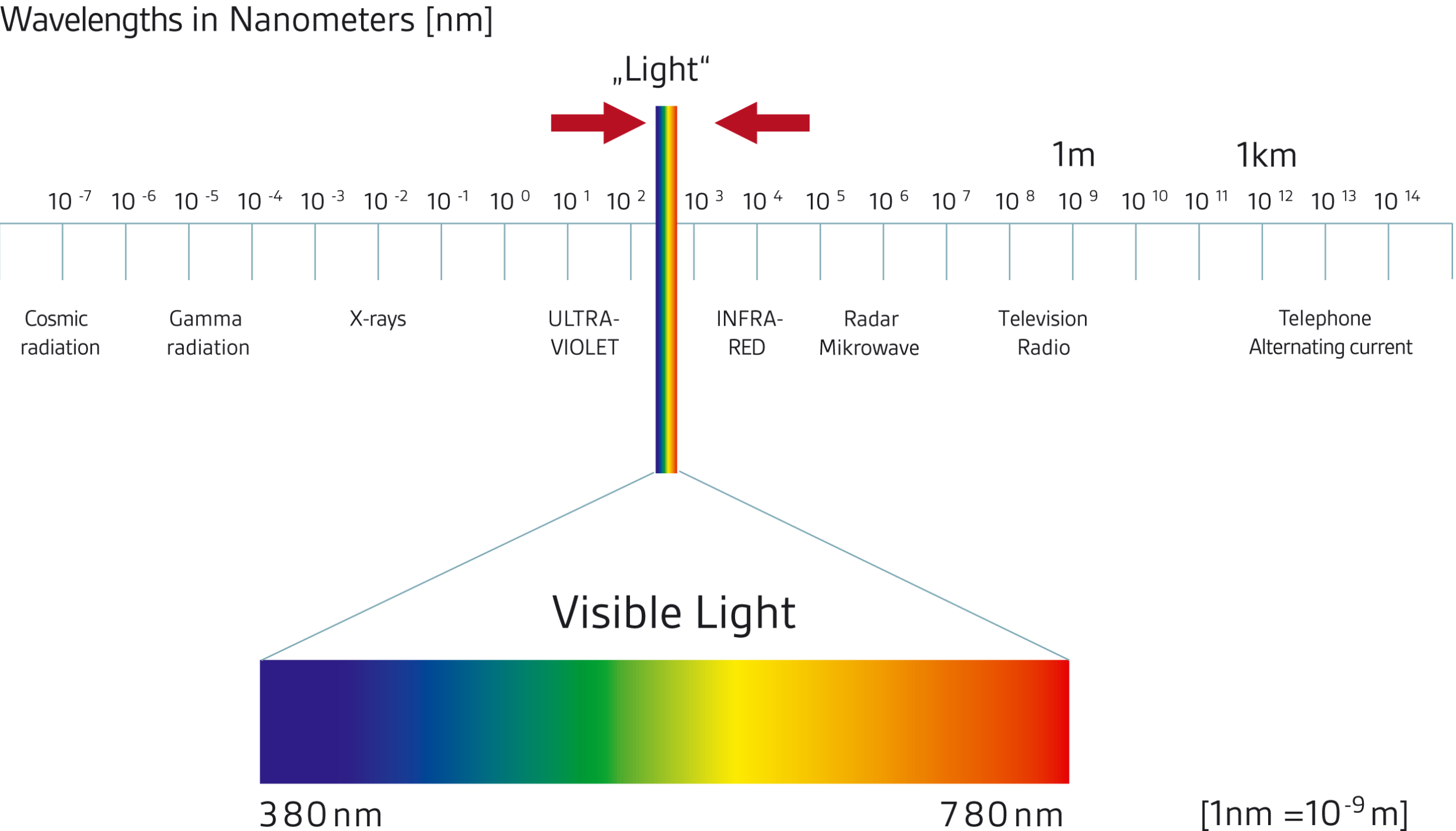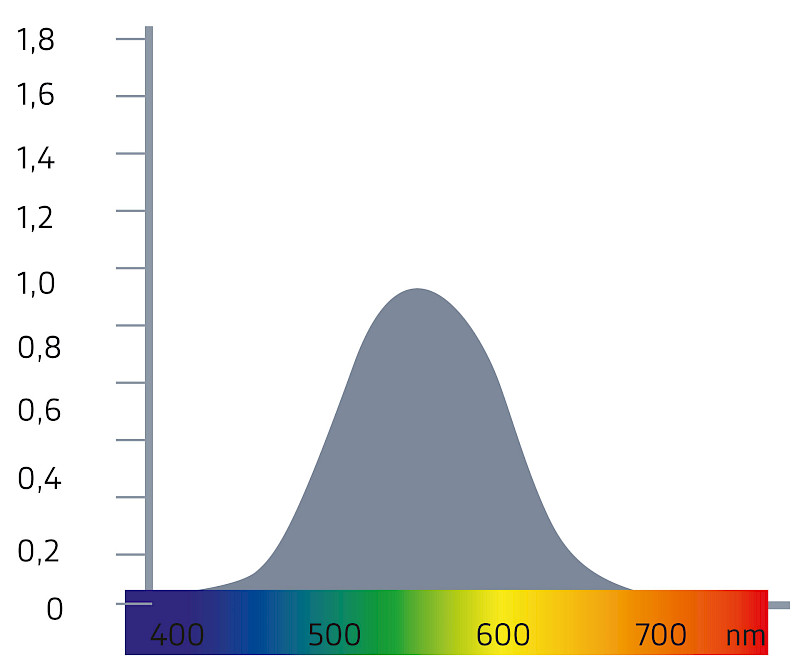Light is defined as the electromagnetic radiation perceptible to the human eye within a wavelength range of 380 to 780 nanometres.
Each wavelength corresponds to a specific colour impression: while an electromagnetic wave with a wavelength of 380 nanometres is perceived by the eye as visible violet light, a wavelength of 780 nanometres produces a red colour impression. In between lies the entire visible colour spectrum – from violet through blue, green, yellow, orange to red. Taken together, the individual wavelengths create the colour white.
Light is only a small part of electromagnetic radiation
Beyond the visible spectrum lie, for example, ultraviolet and infrared radiation. But television and radio signals as well as X‑rays are also part of the electromagnetic spectrum.
The well-known spectrum of electromagnetic radiation:

Just as the human ear is particularly sensitive in the frequency range of speech – and thus perceives tones in this range as louder than very low or very high tones – the eye is also more sensitive to certain wavelengths than to others.
The spectral sensitivity of the human eye
Plants and animals exhibit a different sensitivity to brightness than humans, which can vary depending on species. The spectral sensitivity of the human eye describes the degree to which electromagnetic radiation of a particular wavelength is perceived. This is shown in the so-called luminous efficiency curve “V(lambda)”.
The grey curve illustrates the wavelengths of electromagnetic radiation to which the human eye is particularly sensitive. For lighting engineers, this is important information, since the brightness sensitivity V(λ) of the human eye modifies the perception of light. An artificial light source that primarily emits radiation in the short-wave blue range may therefore be perceived as less bright, at the same physical radiant flux, than another light source with its emphasis in the green range.

Human Centric Light (HCL)
Light is more than illumination. Light receptors in our retina containing melanopsin regulate the human internal clock based on the colour of daylight and the angle at which it enters the eye.
The discovery of these light receptors, which are responsible for the sleep–wake cycle, was followed by the technical implementation in the form of HCL. With white LEDs, the visible spectrum of natural light colours can be reproduced. This makes it possible to simulate the changes in daylight over the course of the day using artificial lighting, thus compensating for the disadvantages of predominantly artificial light.
In the short term, these findings can also be applied to extend phases of concentration by increasing the proportion of blue light in the illumination. However, scientific studies attempting to extend this effect beyond the natural time window achieved only short-lived success. On the contrary, manipulation of the sleep–wake rhythm quickly revealed negative consequences: sickness absence rates increased after only a short time.




